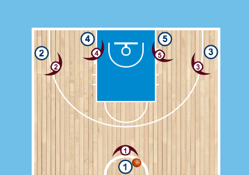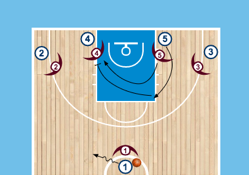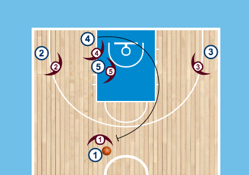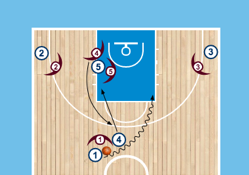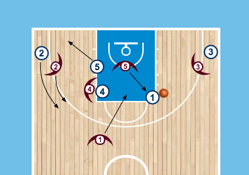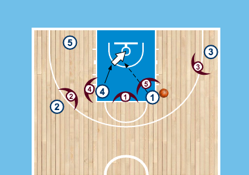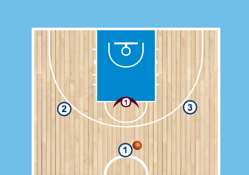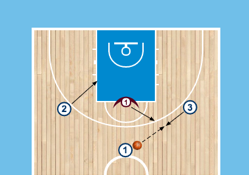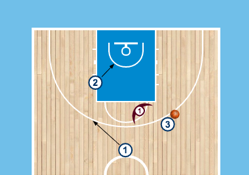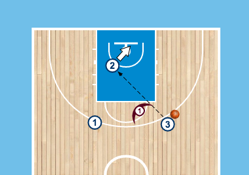November 26, 2016, Zwolle (Nationaal Basketball Congres)
Clinic notes by Giorgio Marrale (in English)
Get open! Pass the ball! But why, and how?
Resources:
- https://www.basketball.nl/verenigingen-en-opleidingen/nieuws/nationaal-basketball-congres/workshops-nbc-2016
- https://www.basketball.nl/media/verenigingen-en-opleidingen/nationaal-basketball-congres/nbc-2016-workshops/161126_NBC_Workshopvrijlopen-HeinGerdTriemstra_Presentatie.pdf
Video:
There are four defined target audiences in sports:
- Recreational
- Sport Stimulation
- Talent Development
- Top Sport
A similarity between basketball and other ball-sports: Create advantages such as 2 vs 1.
Different methods for basketball players to get open:
- Cuts/ fake cuts/ spins
- Backdoor cuts
- Hand-offs
- Screens
1-4 Low Offense
Youth basketball players must be trained to become VERY good 1 on 1
This set-up offers the initial ability for the ball-handler to go 1 on 1, then wait for the ball-screen and execute a pick and roll, otherwise retreat and find the open man.
Coaching primary on decision making moments:
- Does the ball-handler have any threat when he the opportunity arises?
- Can the ball-handler beat his man 1 on 1?
- Does the ball-handler attack/ retreat the hedge?
- Does it take too long (dribbling) to execute the offense?
If any of the above, rotate the teams.
O1 starts one on one against D1.
After O1 chooses a
He directly pins down to set a screen for O4.
O4 can get over the screen on either side, depending on the screener, then sets a backscreen for O1.
O4 rolls and seals after O1 uses the screen to attack.
They both attack one side of the basket.
O5 rolls to the short corner, while O4 and O1 attack the helper to get the open lay-up.
Multiple options:
- O4 and O1 play two on one.
- D3 gives strong side help so O3 is open for the corner three.
O5 is open for the shortcorner spot-up shot in case of a two on two.
Drills to teach playing one on one
Players should learn to defend in an active stance. Foot fire should be implemented in a drill when possible.
A trick to learn players how to get open one pass away from the ball, in an overplay situation, is posting-up outside of the defender so the ball-handler can lob-pass the ball to his team mate’s furthest hand. If the defender stands still, the ball handler can easily pass the ball about 4 feet higher so the teammate can catch the ball with his outside hand. Hein Gerd specifically mentioned not to reveal this trick too early as young players should always
Players on defense, in any of the following drills, are not allowed to use their hands. You should award points and possession to the ball-handler. Use simple tag-games to teach players to get open.
1-1 from Mid-court Drill
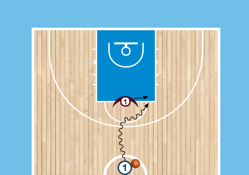
Plain and simple 1 on 1 from mid-court. The ball-handler has to attack the defender on the foul line.
A variation to this drill is to execute the 1 on 1 from different angles.
1-1 from Mid-court with Defensive Handicap Drill
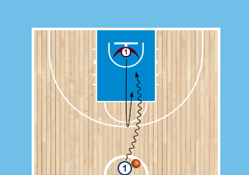
O1 starts by doing quick cross-overs in the circle at mid-court.
D1 starts with foot-fire in the no-charge zone.
The drill starts for both players when O1 attacks the basket. D1 immediately has to sprint forward, touch the three-point line, the try to stop the scoring attempt.
1-2 from Mid-court Drill
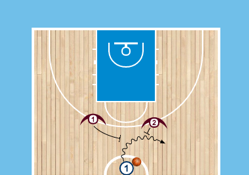
O1 starts by doing quick cross-overs in the circle at mid-court.
D1 and D2 start with foot-fire at the perimeter.
The drill starts for all three players when O1 attacks the basket.
Bull in the Middle Drill
O1 starts on the foul line, O2 starts on the left block, and O3 on starts on the right block.
D1 starts in the middle.
players rotate on a deflection or a steal.
A variation to this drill is to only allow passing while jumping in the air.
The following drill progressively leads up to the 3-1 passing/ finishing drill.
3-1 Passing/ Finishing Drill
Only allow passing while jumping in the air. This includes the assist and finish-attempt. Executing this drill without passing while jumping in the air, any pass alongside the defender should create a 2 on 1 situation.
1-1 Handicap Drill
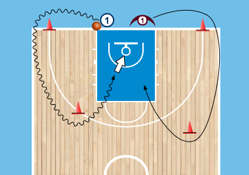
O1 and D1 start on the base line having their feet next to each other.
The drill starts for both players when O1 starts moving.
Both players must slide lateral when moving to the first cones. O1 dribbles while doing slides.
D1 has to close-out and try to stop the scoring attempt.
3-3 No Dribble Game Drill
Setting screens isn’t allowed.
